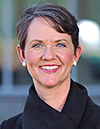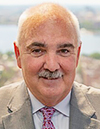Overview
Watch NowFrom shifting labor demands to evolving skills gaps, the workforce of the future is taking shape now — and public sector leaders are under pressure to keep up. The good news? Tools like AI and advanced analytics are already helping agencies prepare for what’s next.
Join experts from SAS and Government Technology for a dynamic conversation on how technology is enabling smarter, faster workforce strategies across areas such as justice-involved populations, public health and education.
This 30-minute session will explore:
- Practical ways AI is being used to maximize impact per tax dollar
- Strategies for aligning workforce planning with anticipated industry growth
- Understanding responsible and ethical use — and knowing the limits of AI for your organization
- Real-world examples from state and local agencies using tech to bridge gaps today
If you're tasked with workforce innovation, don’t miss this opportunity to hear how peers across sectors are preparing for the next chapter.





